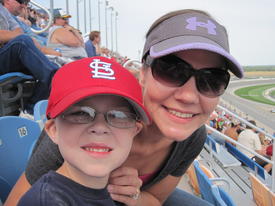We are pleased to announce that as of March 4, 2025, an updated Rich Text Editor has been introduced in the MyFitnessPal Community. To learn more about the changes, please click here. We look forward to sharing this new feature with you!
Cardio burn vs. Fat burn

Julbella78
Posts: 161 Member
Possibly a stupid question.....What is the difference between keeping your heart rate high for cardio and a bit lower for fat burning? Don't they both basically do the same thing, help you lose weight?
0
Replies
-
From what I understand the lower number does not give you a good cardio workout. The higher number gives you the cardio and the burn0
-
yeah the higher your heart rate the more calories you burn, and you need to have a raised heart rate for minimum of 20 minutes to burn any fat, hope this helps x0
-
I do high intensity cardio, about 85% of my max bpm, only to supplement my strength training on my off days. I did the math. Cardio doesn't help you lose weight that much. You'd be lucky to lose 20 lbs in a year from doing cardio only, 5 times a week. But to answer your question, the more effort over time the more calories are burned.0
-
Hope this helps.
TRAINING ZONES
Healthy Heart Zone (Warm up) --- 50 - 60% of maximum heart rate: The easiest zone and probably the best zone for people just starting a fitness program. It can also be used as a warm up for more serious walkers. This zone has been shown to help decrease body fat, blood pressure and cholesterol. It also decreases the risk of degenerative diseases and has a low risk of injury. 85% of calories burned in this zone are fats!
Fitness Zone (Fat Burning) --- 60 - 70% of maximum heart rate: This zone provides the same benefits as the healthy heart zone, but is more intense and burns more total calories. The percent of fat calories is still 85%.
Aerobic Zone (Endurance Training) --- 70 - 80% of maximum heart rate: The aerobic zone will improve your cardiovascular and respiratory system AND increase the size and strength of your heart. This is the preferred zone if you are training for an endurance event. More calories are burned with 50% from fat.
Anaerobic Zone (Performance Training) --- 80 - 90% of maximum heart rate: Benefits of this zone include an improved VO2 maximum (the highest amount of oxygen one can consume during exercise) and thus an improved cardiorespiratory system, and a higher lactate tolerance ability which means your endurance will improve and you'll be able to fight fatigue better. This is a high intensity zone burning more calories, 15 % from fat.
Red Line (Maximum Effort) --- 90 - 100% of maximum heart rate: Although this zone burns the highest number of calories, it is very intense. Most people can only stay in this zone for short periods. You should only train in this zone if you are in very good shape and have been cleared by a physician to do so.0 -
Hope this helps.
TRAINING ZONES
Healthy Heart Zone (Warm up) --- 50 - 60% of maximum heart rate: The easiest zone and probably the best zone for people just starting a fitness program. It can also be used as a warm up for more serious walkers. This zone has been shown to help decrease body fat, blood pressure and cholesterol. It also decreases the risk of degenerative diseases and has a low risk of injury. 85% of calories burned in this zone are fats!
Fitness Zone (Fat Burning) --- 60 - 70% of maximum heart rate: This zone provides the same benefits as the healthy heart zone, but is more intense and burns more total calories. The percent of fat calories is still 85%.
Aerobic Zone (Endurance Training) --- 70 - 80% of maximum heart rate: The aerobic zone will improve your cardiovascular and respiratory system AND increase the size and strength of your heart. This is the preferred zone if you are training for an endurance event. More calories are burned with 50% from fat.
Anaerobic Zone (Performance Training) --- 80 - 90% of maximum heart rate: Benefits of this zone include an improved VO2 maximum (the highest amount of oxygen one can consume during exercise) and thus an improved cardiorespiratory system, and a higher lactate tolerance ability which means your endurance will improve and you'll be able to fight fatigue better. This is a high intensity zone burning more calories, 15 % from fat.
Red Line (Maximum Effort) --- 90 - 100% of maximum heart rate: Although this zone burns the highest number of calories, it is very intense. Most people can only stay in this zone for short periods. You should only train in this zone if you are in very good shape and have been cleared by a physician to do so.
The calories from fat refers to dietary fat, not fat stores or essential fat. Lower intensity cardio burns a higher percentage of protein than higher intensity cardio, which burns almost exclusively carbohydrates. When there's no more calories from food to use, then fat stores are used, then muscle and essential fats.0 -
As I understand it, and I'm not a real expert, the fat burning zone is ideal if you are taking the LSD (Long Slow Distance) approach to your exercise. If you do this you aim to spend ages (1.5+ hours) at your exercise. This should be around 65% of max heart rate which is fairly easy but means that your body is working entirely aerobically..
The cardio zone is up to about 75% of max heart rate and starts to work anaerobically. This means some calories come from stored glycogen (as I understand it) and less from fat. However, a short hard workout will continue to burn calories after the exercise. So a short hard work out will burn more calories than an LSD exercise.
If you have hours to spare do LSD, but anything less than 1 hour will be pointless. A short hard workout (30mins+) will burn lots of cals during and raise metabolism after.
Source:http://www.gssiweb.com/Article_Detail.aspx?articleid=32&level=2&topic=80 -
As I understand it, and I'm not a real expert, the fat burning zone is ideal if you are taking the LSD (Long Slow Distance) approach to your exercise. If you do this you aim to spend ages (1.5+ hours) at your exercise. This should be around 65% of max heart rate which is fairly easy but means that your body is working entirely aerobically..
The cardio zone is up to about 75% of max heart rate and starts to work anaerobically. This means some calories come from stored glycogen (as I understand it) and less from fat. However, a short hard workout will continue to burn calories after the exercise. So a short hard work out will burn more calories than an LSD exercise.
If you have hours to spare do LSD, but anything less than 1 hour will be pointless. A short hard workout (30mins+) will burn lots of cals during and raise metabolism after.
Source:http://www.gssiweb.com/Article_Detail.aspx?articleid=32&level=2&topic=8
Yeah. Or just try to be more active in your daily activity. Get an active hobby. Take some martial arts or something.0
This discussion has been closed.
Categories
- All Categories
- 1.4M Health, Wellness and Goals
- 394.4K Introduce Yourself
- 43.5K Getting Started
- 259.7K Health and Weight Loss
- 176.1K Food and Nutrition
- 47.5K Recipes
- 232.7K Fitness and Exercise
- 444 Sleep, Mindfulness and Overall Wellness
- 6.4K Goal: Maintaining Weight
- 8.5K Goal: Gaining Weight and Body Building
- 153.1K Motivation and Support
- 8.1K Challenges
- 1.3K Debate Club
- 96.3K Chit-Chat
- 2.5K Fun and Games
- 4K MyFitnessPal Information
- 23 News and Announcements
- 934 Feature Suggestions and Ideas
- 2.7K MyFitnessPal Tech Support Questions




